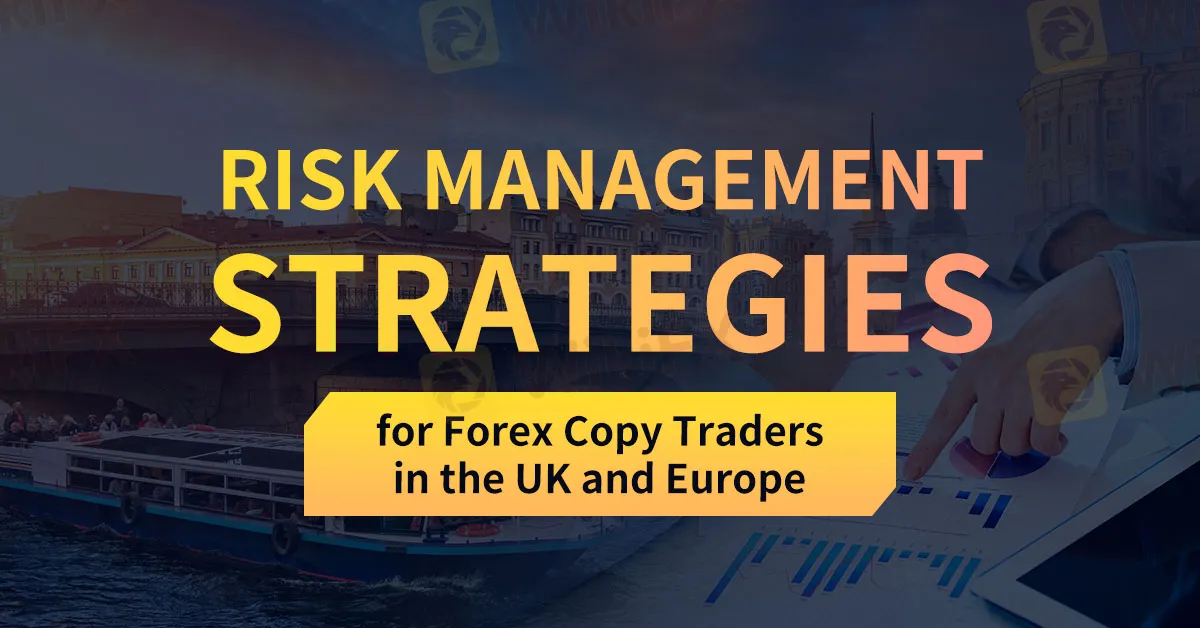简体中文
繁體中文
English
Pусский
日本語
ภาษาไทย
Tiếng Việt
Bahasa Indonesia
Español
हिन्दी
Filippiiniläinen
Français
Deutsch
Português
Türkçe
한국어
العربية
Safeguarding Investments: Risk Management Strategies for Forex Copy Traders in the UK and Europe
Abstract:Forex copy trading offers investors the opportunity to replicate the trades of experienced traders, potentially generating significant returns. However, with the potential for high rewards also comes inherent risks. In the UK and Europe, where regulatory oversight is stringent and investor protection is paramount, implementing effective risk management strategies is crucial for safeguarding investments and ensuring long-term success in forex copy trading.

Forex copy trading offers investors the opportunity to replicate the trades of experienced traders, potentially generating significant returns. However, with the potential for high rewards also comes inherent risks. In the UK and Europe, where regulatory oversight is stringent and investor protection is paramount, implementing effective risk management strategies is crucial for safeguarding investments and ensuring long-term success in forex copy trading.
One of the fundamental principles of risk management in forex copy trading is diversification. By spreading investments across multiple trading strategies, asset classes, and currency pairs, investors can reduce their exposure to any single risk factor or market event. Diversification helps mitigate the impact of adverse market movements and increases the resilience of investment portfolios against volatility.
WikiFX, a leading platform for forex traders and investors, provides a wealth of resources and tools to help traders implement effective diversification strategies. With access to a wide range of trading strategies and asset classes, investors can build diversified portfolios tailored to their risk tolerance and investment objectives. WikiFX's comprehensive database of strategy providers and performance metrics enables investors to evaluate the diversification potential of different trading strategies and make informed investment decisions.
Position sizing is another critical aspect of risk management in forex copy trading. By determining the appropriate size of each position based on risk parameters such as account size, risk tolerance, and the probability of loss, investors can optimize their risk-return profile and protect their investment capital. WikiFX offers risk management tools and calculators that help traders calculate the optimal position size for each trade, ensuring that they trade within their risk limits and avoid overexposure to the market.
Setting stop-loss orders is an essential risk management technique that helps limit potential losses and protect investment capital in forex copy trading. Stop-loss orders automatically trigger the sale of a position when the market price reaches a predefined level, preventing further losses beyond a certain threshold. WikiFX's trading platform allows investors to easily set stop-loss orders for their copied trades, providing an additional layer of protection against adverse market movements.
Moreover, WikiFX provides traders with access to advanced risk management features, such as risk score indicators and risk allocation settings, which enable investors to assess the risk levels of different trading strategies and allocate capital accordingly. By diversifying across strategies with varying risk profiles and adjusting risk allocation based on performance and market conditions, investors can optimize their risk-adjusted returns and minimize the impact of potential losses.
In conclusion, effective risk management is essential for success in forex copy trading in the UK and Europe. By implementing diversification strategies, proper position sizing techniques, and risk management tools provided by platforms like WikiFX, investors can safeguard their investments and navigate the complexities of the forex markets with confidence. With a focus on risk management, traders can achieve their investment goals and build a sustainable portfolio for the long term.

Disclaimer:
The views in this article only represent the author's personal views, and do not constitute investment advice on this platform. This platform does not guarantee the accuracy, completeness and timeliness of the information in the article, and will not be liable for any loss caused by the use of or reliance on the information in the article.
Read more

Silver surges past $33—are you ready for what comes next?
Silver has once again become the center of attention in global financial markets.

171 years! One of this country’s largest crypto-related fraud
A federal court in Brazil has handed down one of the harshest sentences in the country’s history for a crypto-related fraud, jailing three executives of the now-defunct Braiscompany scheme to a combined 171 years behind bars. The case, which saw some 20,000 investors lose approximately R$1.11 billion (about USD 190 million), underscores Brazil’s intensifying crackdown on unregulated cryptocurrency operations

Japan Issues Urgent Warning on $700M Unauthorized Trades
Japan's FSA warns of $700M in unauthorized trades from phishing attacks on brokerage accounts. Cybersecurity threats continue to rise in the country.

Protect Your Portfolio in the Storm | What Are Safe Haven Assets?
Gold surged to an all-time high on Tuesday, driven by renewed weakness in the US dollar, ongoing trade war tensions, and critical remarks from President Donald Trump aimed at the Federal Reserve. These factors fuelled strong demand for safe-haven assets, pushing bullion above US$3,485 an ounce for the first time. But what exactly are safe haven assets? Why is everyone raving about them?
WikiFX Broker
Latest News
eXch Exchange to Shut Down on May 1 Following Laundering Allegations
How a Viral TikTok Scam Cost a Retiree Over RM300,000
JT Capital Markets Review
FCA Proposes Simplifying Investment Cost Disclosure for Retail Investors
Fresh Look, Same Trust – INGOT Brokers Rebrands its Website
FCA Issues Alerts Against Unauthorised and Clone Firms in the UK
Consob Orders Blackout of 9 Fraudulent Financial Websites
Tradu Joins TradingView for Seamless CFD and Forex Trading
Japan Issues Urgent Warning on $700M Unauthorized Trades
Silver surges past $33—are you ready for what comes next?
Currency Calculator


